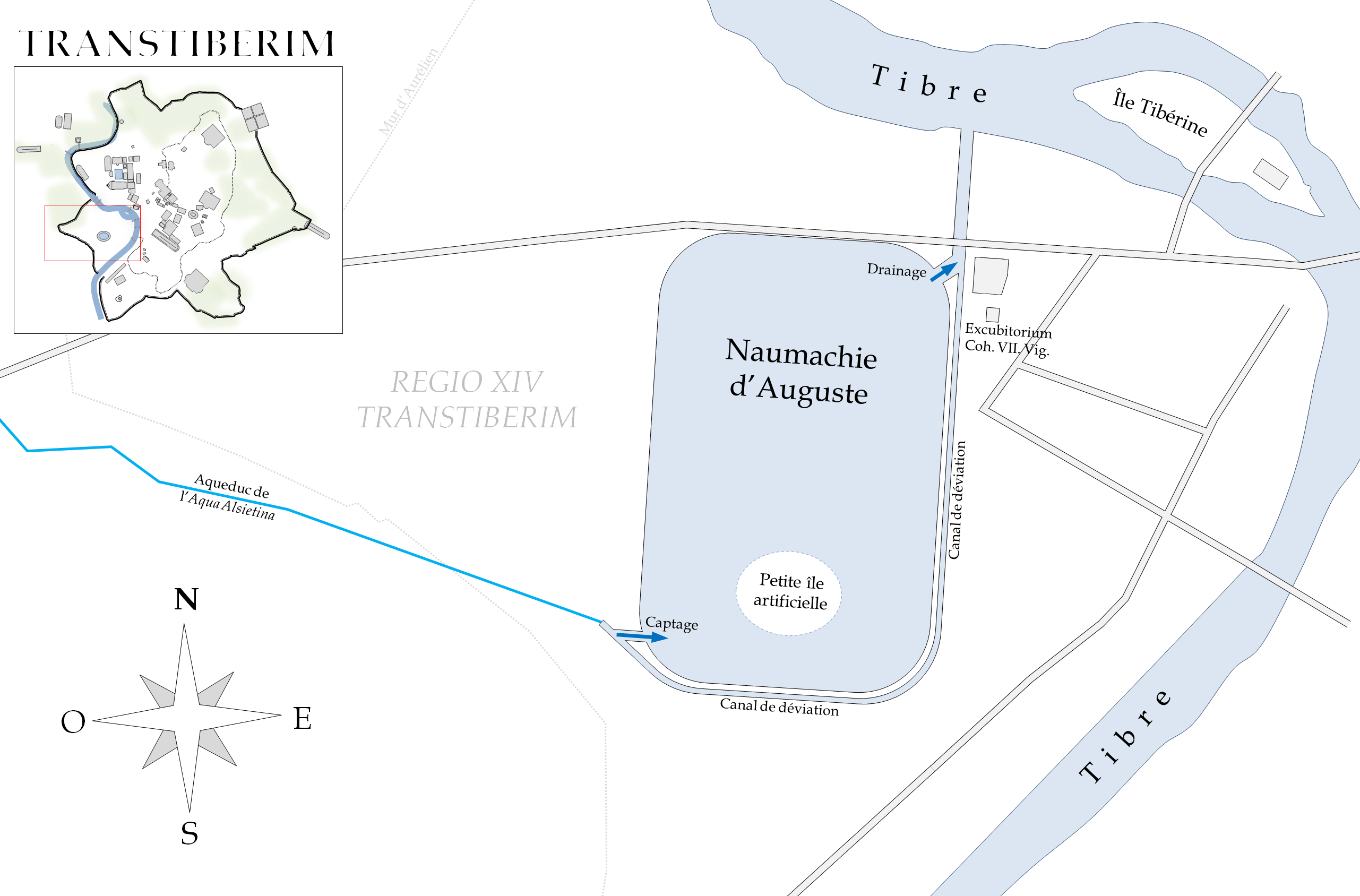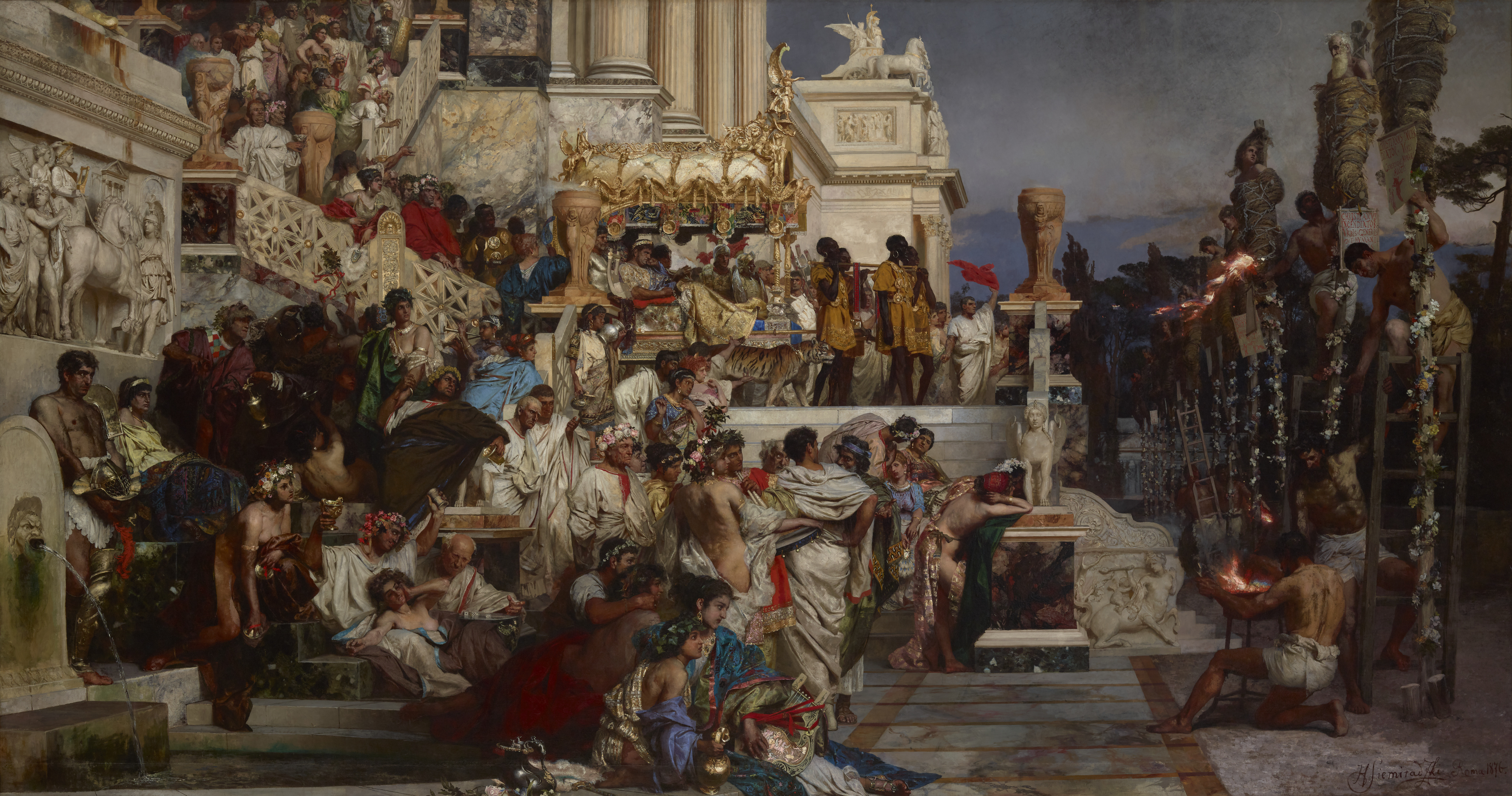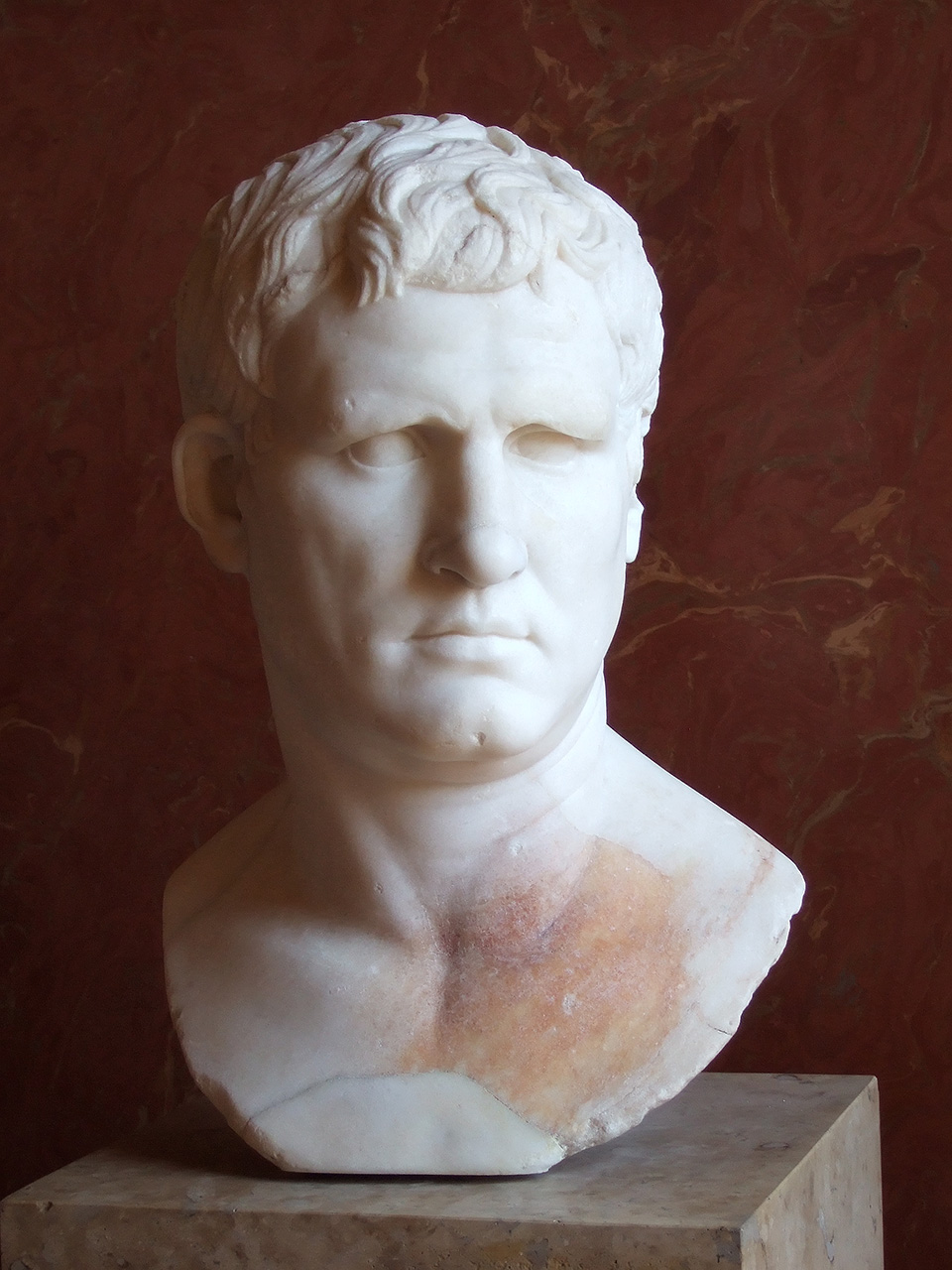|
Naumachia Of Augustus
The Naumachia of Augustus (Latin: ''Naumachia Augusti'') was a large, shallow basin constructed by the emperor Augustus on the right bank of the Tiber, Tiber River. It was supplied with water by the Aqua Alsietina, Aqua Alsietina aqueduct and used for staging aquatic spectacles, including reenactments of naval battles. Location The Naumachia of Augustus was located on the right bank of the Tiber, in the area known in antiquity as ''Transtiberim'', corresponding to part of modern ''Trastevere'', specifically the plain now occupied by the ''San Cosimato'' Monastery. The Residents of Rome list two naumachiae in ''Region XIV'', which encompassed ''Transtiberim'' and the Vatican City, Vatican area. One of these is generally identified as the ''Naumachia Traiani'', situated in the Vatican plain. The identity of the second remains uncertain; it could refer to the Naumachia of Augustus, that of Domitian, or that of Philip the Arab. The Naumachia of Domitian has not been definitively loc ... [...More Info...] [...Related Items...] OR: [Wikipedia] [Google] [Baidu] |
14 Regions Of Augustan Rome
In 7 BC, Augustus divided the city of ancient Rome, Rome into 14 administrative regions (Latin , ). These replaced the four —or "quarters"—traditionally attributed to Servius Tullius, sixth king of Rome. They were further divided into official neighborhoods (). Originally designated by number, the regions acquired nicknames from major landmarks or Topography of ancient Rome, topographical features within them. After the reign of Constantine the Great, the imperial city of Constantinople was also divided into fourteen ''regiones'', on the Roman example: the 14 regions of Constantinople. History of Rome's regions Evidence of regions in Rome before Augustus is limited. Writing in the mid-40s BC, Marcus Terentius Varro describes four 'partes urbis', referring to them individually as a ‘regio’ with both names and numbers: I Suburana, II Esquilina, III Collina and IV Palatina. Varro also provides evidence for vici in Republican Rome, deriving the word vicus from via and w ... [...More Info...] [...Related Items...] OR: [Wikipedia] [Google] [Baidu] |
Bireme
A bireme (, ) is an ancient oared warship (galley) with two superimposed rows of oars on each side. Biremes were long vessels built for military purposes and could achieve relatively high speed. They were invented well before the 6th century BC and were used by the Phoenicians, Assyrians, and Greeks. Description The name bireme comes from "bi-" meaning two and "-reme" meaning oar. It was typically about long with a maximum beam width of around . It was modified from the penteconter, a ship that had only one set of oars on each side, the bireme having two sets of oars on each side. The bireme was twice the triaconter's length and height, and thus employed 120 rowers. Biremes were galleys, galleasses, dromons, and small pleasure crafts called pamphyles. The next development, the trireme, keeping the length of the bireme, added a tier to the height, the rowers being thus increased to 180. It also had a large square sail. Uses These ships were frequently used by the Romans, ... [...More Info...] [...Related Items...] OR: [Wikipedia] [Google] [Baidu] |
Res Gestae
''Res gestae'' (Latin: "things done") is a term found in substantive and procedural American jurisprudence and English law. In American substantive law, it refers to the period of a felony from start-to-end. In American procedural law, it refers to a former exception to the hearsay rule for statements made spontaneously or as part of an act. The English and Canadian version of ''res gestae'' is similar, but is still recognized as a traditional exception to the hearsay rule. ''Res gestae'' in American substantive law In certain felony murder statutes, ''res gestae'' is a term defining the overall start-to-end sequence of the underlying felony. Generally, a felony's ''res gestae'' is considered terminated when the suspect has achieved a position of relative safety from law enforcement. ''Res gestae'' in American hearsay law Under the Federal Rules of Evidence, ''res gestae'' may formerly have been, but is no longer, an exception to the rule against hearsay evidence based on th ... [...More Info...] [...Related Items...] OR: [Wikipedia] [Google] [Baidu] |
Augusti Naumachia Plan
''Augustus'' (plural ''Augusti''; , ; "majestic", "great" or "venerable") was the main title of the Roman emperors during Antiquity. It was given as both name and title to Gaius Julius Caesar Octavianus (often referred to simply as Augustus) in 27 BC, marking his accession as Rome's first emperor. On his death, it became an official title of his successor, and was so used by all emperors thereafter. The feminine form '' Augusta'' was used for Roman empresses and other female members of the imperial family. The masculine and feminine forms originated in the time of the Roman Republic, in connection with things considered divine or sacred in traditional Roman religion. Their use as titles for major and minor Roman deities of the Empire associated the imperial system and family with traditional Roman virtues and the divine will and may be considered a feature of the Roman imperial cult. In Rome's Greek-speaking provinces, "Augustus" was translated as ''Sebastos'' (Σεβαστό� ... [...More Info...] [...Related Items...] OR: [Wikipedia] [Google] [Baidu] |
Cassius Dio
Lucius Cassius Dio (), also known as Dio Cassius ( ), was a Roman historian and senator of maternal Greek origin. He published 80 volumes of the history of ancient Rome, beginning with the arrival of Aeneas in Italy. The volumes documented the subsequent founding of Rome (753 BC), the formation of the Republic (509 BC), and the creation of the Empire (27 BC) up until 229 AD, during the reign of Severus Alexander. Written in Koine Greek over 22 years, Dio's work covers approximately 1,000 years of history. Many of his books have survived intact, alongside summaries edited by later authors such as Xiphilinus, a Byzantine monk of the 11th century, and Zonaras, a Byzantine chronicler of the 12th century. Biography Lucius Cassius Dio was the son of Cassius Apronianus, a Roman senator and member of the Cassia gens, who was born and raised at Nicaea in Bithynia. Byzantine tradition maintains that Dio's mother was the daughter or sister of the Greek orator and philosopher, ... [...More Info...] [...Related Items...] OR: [Wikipedia] [Google] [Baidu] |
Ager Vaticanus
In ancient Rome, the ''Ager Vaticanus'' (, "Vatican Field") was the alluvial plain on the right (west) bank of the Tiber. It was also called ''Ripa Veientana'' or ''Ripa Etrusca'', indicating the Etruscan dominion during the archaic period. It was located between the Janiculum, the Vatican Hill, and Monte Mario, down to the Aventine Hill and up to the confluence of the Cremera creek.Liverani (2016) p. 21 Origin of the name About the etymology of ''Vātī̆cānus'' there are several hypotheses: according to Barthold Georg Niebuhr, the toponym perhaps refers to an archaic Etruscan settlement called ''Vaticum'';Gigli (1990) p. 7 Varro derives the name from a childbirth deity named ''Vaticanus'' or '' Vagitanus'', the god of the ''vagiti'' ("wailings"), since ''va'' was supposed to be the first syllable pronounced by a child; Aulus Gellius on his part derives the name from ''vāticinium'', a prophecy elicited by the flight of the birds or from the study of the liver of the victi ... [...More Info...] [...Related Items...] OR: [Wikipedia] [Google] [Baidu] |
Ostia Antica
Ostia Antica () is an ancient Roman city and the port of Rome located at the mouth of the Tiber. It is near modern Ostia, southwest of Rome. Due to silting and the invasion of sand, the site now lies from the sea. The name ''Ostia'' (the plural of ''ostium'') derives from Latin ''os'' 'mouth'. Ostia is now a large archaeological site noted for the excellent preservation of its ancient buildings, magnificent frescoes and impressive mosaics. The city's decline after antiquity led to harbor deterioration, marshy conditions, and reduced population. Sand dunes covering the site aided its preservation. Its remains provide insights into a city of commercial importance. As in Pompeii, Ostia's ruins provide details about Roman urbanism that are not accessible within the city of Rome itself. History Origins Ostia may have been Rome's first '' colonia''. According to legend, Ancus Marcius, the fourth king of Rome, was the first to destroy Ficana, an ancient town that was only fro ... [...More Info...] [...Related Items...] OR: [Wikipedia] [Google] [Baidu] |
Great Fire Of Rome
The Great Fire of Rome () began on 19 July 64 AD. The fire started in the merchant shops around Rome's chariot stadium, Circus Maximus. After six days, the fire was brought under control, but before the damage could be assessed, the fire reignited and burned for another three days. In the aftermath of the fire, nearly three quarters of Rome had been destroyed (10 out of 14 districts). According to Tacitus and later Christian tradition, Emperor Nero blamed the devastation on the Christian community in the city, initiating the empire's first persecution against the Christians. Other contemporary historians blamed Nero's incompetence but it is commonly agreed by historians nowadays that Rome was too densely populated and inadequately prepared to effectively deal with large scale disasters, including fires, and that such an event was inevitable. Background Previous recorded fires in Rome Fires in Rome were common, especially in houses, and fires that had occurred previously i ... [...More Info...] [...Related Items...] OR: [Wikipedia] [Google] [Baidu] |
Syracuse, Sicily
Syracuse ( ; ; ) is a historic city on the Italian island of Sicily, the capital of the Italian province of Syracuse. The city is notable for its rich Greek and Roman history, culture, amphitheatres, architecture, and as the birthplace and home of the pre-eminent mathematician and engineer Archimedes. This 2,700-year-old city played a key role in ancient times, when it was one of the major powers of the Mediterranean world. Syracuse is located in the southeast corner of the island of Sicily, next to the Gulf of Syracuse beside the Ionian Sea. It is situated in a drastic rise of land with depths being close to the city offshore although the city itself is generally not so hilly in comparison. The city was founded by Ancient Greek Corinthians and Teneans and became a very powerful city-state. Syracuse was allied with Sparta and Corinth and exerted influence over the entirety of Magna Graecia, of which it was the most important city. Described by Cicero as "the ... [...More Info...] [...Related Items...] OR: [Wikipedia] [Google] [Baidu] |
Lucius Caesar
Lucius Caesar (17 BC – 20 August 2 AD) was a grandson of Augustus, the first Roman emperor. The son of Marcus Vipsanius Agrippa and Julia the Elder, Augustus' only daughter, Lucius was adopted by his grandfather along with his older brother, Gaius Caesar. As the emperor's adopted sons and joint-heirs to the Roman Empire, Lucius and Gaius had promising political and military careers. However, Lucius died of a sudden illness on 20 August 2 AD, in Marseille, Massilia, Roman Gaul, Gaul, while traveling to meet the Roman army in Hispania. His brother Gaius also died at a relatively young age on 21 February 4 AD. The untimely loss of both heirs compelled Augustus to redraw the line of succession by adopting Lucius' younger brother, Agrippa Postumus as well as his stepson, Tiberius on 26 June 4 AD. Background Lucius' father Marcus Vipsanius Agrippa was an early supporter of Augustus (then "Octavius") during the Final War of the Roman Republic that ensued as a result of the assassinati ... [...More Info...] [...Related Items...] OR: [Wikipedia] [Google] [Baidu] |
Gaius Caesar
Gaius Caesar (20 BC – 21 February 4 AD) was a grandson and heir to the throne of Roman emperor Augustus, alongside his younger brother Lucius Caesar. Although he was born to Marcus Vipsanius Agrippa and Julia the Elder, Julia, Augustus' only daughter, Gaius and Lucius were raised by their grandfather as his adopted sons and joint-heirs. He experienced an accelerated political career befitting a member of the Julio-Claudian dynasty, with the Roman Senate allowing him to advance his career without first holding a quaestorship or praetorship, offices that ordinary senators were required to hold as part of the ''cursus honorum''. In 1 BC, Gaius was given command of the eastern provinces, after which he concluded a peace treaty with King Phraates V of Parthia, Phraates V of Parthia on an island in the Euphrates. Shortly afterwards, he was appointed to the office of Roman consul, consul for the following year, 1 AD. The year after Gaius' consulship, Lucius died at Marseille, Massil ... [...More Info...] [...Related Items...] OR: [Wikipedia] [Google] [Baidu] |
Titus
Titus Caesar Vespasianus ( ; 30 December 39 – 13 September AD 81) was Roman emperor from 79 to 81. A member of the Flavian dynasty, Titus succeeded his father Vespasian upon his death, becoming the first Roman emperor ever to succeed his biological father. Before becoming emperor, Titus gained renown as a military commander, serving under his father in Judea during the First Jewish–Roman War. The campaign came to a brief halt with the death of emperor Nero in 68, launching Vespasian's bid for the imperial power during the Year of the Four Emperors. When Vespasian was declared Emperor on 1 July 69, Titus was left in charge of ending the Jewish rebellion. In 70, he besieged and captured Jerusalem, and destroyed the city and the Second Temple. For this achievement Titus was awarded a triumph; the Arch of Titus commemorates his victory and still stands today. During his father's rule, Titus gained notoriety in Rome serving as prefect of the Praetorian Guard, and for ... [...More Info...] [...Related Items...] OR: [Wikipedia] [Google] [Baidu] |







